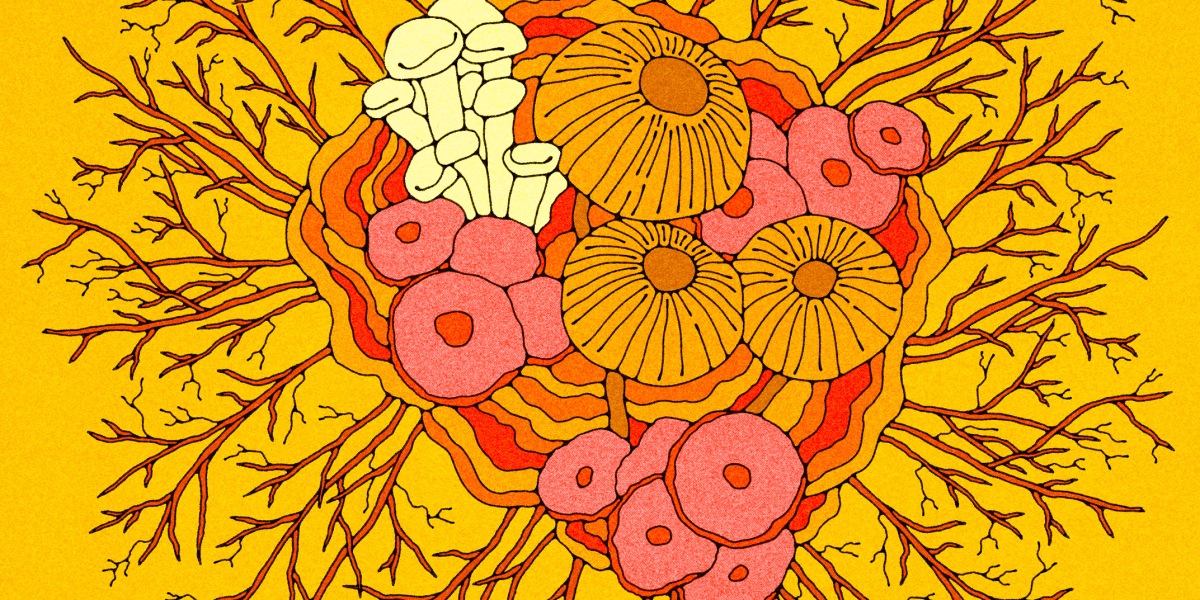
As fungi grow, they are constantly sensing, learning, and making decisions. Fungi are like polyglots: they both “speak” and understand a wide range of chemical signals. They release and respond to chemicals that float through the air and flow through water. Fascinatingly, fungi not only perceive but actively interpret a chemical’s meaning depending on the context and in relation to other chemicals.
Studies of how fungi communicate lag way behind research on communication of plants and especially of animals. Most are based on several “lab rat” species, so knowledge about other types is limited, but here we summarize what’s known about three realms of communication: within a fungus, between fungi of the same species, and with other organisms.
Within a fungus
Each growing tip has both autonomy from and accountability to the whole organism, akin to the relationship of social insects to the hive. Between the cells within every mycelium flows a stream of chemicals, nutrients, and electrical impulses. Their movements act to keep the whole informed about happenings and coordinate actions across the network. Research by Andrew Adamatzky, a professor of unconventional computing at the University of the West of England in Bristol, suggests that they influence the mycelium’s internal bioelectrical signals, which may form a sort of “language.” While a mycelium neither is nor contains a nervous system, mycelia share much in common with these systems. Both have branched structures, reinforce or prune pathways as needed, and use some of the same amino acids to transmit information.
Between fungi of the same species
Many fungi are sexual and must mate to reproduce. They send out pheromones and “sniff” out those of others, and then they grow toward those that seem attractive (based on whatever it is fungi are attracted to). Whenever two mycelia meet, they communicate to negotiate their relationship, which can range from fusion (to form a reproductive or nonreproductive partnership) to indifference to physical exclusion and even chemical antagonism. Each mated mycelium negotiates the physical dynamics of fusion, and of life in partnership thereafter.



